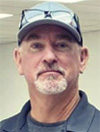I have been selling, servicing and programming irrigation pump controls in and around Idaho for the past 25 years. There has never been a more “interesting” time in this industry than the past couple of years. With supply chain interruptions, freight challenges, inflationary pressures, astronomically extended lead times and the surging popularity of new active front-end (AFE) variable-frequency drive (VFD) technology, the pumping industry has seen some major reshuffling recently, and Idaho is smack dab in the middle of it all.
There are basically three types of pump control panels: line-starting pump panels, soft-starter pump panels and VFD pump panels. A line-starting pump panel uses a contactor to start the motor at full blast (at a fixed 60 hertz) and creates a large inrush of current. A soft-starter pump panel slowly ramps up the motor over a period of time – usually around 30 seconds – and limits the inrush current to the motor and runs at a fixed 60 hertz after the ramp-up. A VFD control panel can change the speed (hertz) of an electric motor automatically in response to a sensor. In pumping, for example, a VFD can speed up or slow down the motor to provide more or less flow automatically as needed, which keeps the flow, level or pressure constant, even if demand varies. In doing so, the VFD can reduce the amount of electricity consumed, thereby reducing the power bill. A VFD can also reduce wear and tear on the system, control ramp-up and ramp-down times, limit inrush current to the motor (soft start) and many other automation benefits. VFDs are also commonly used to convert 1-phase to 3-phase power, and some can even voltage double without a transformer.
The top 5 main reasons for an electrical control panel to fail prematurely
5. Improper sizing of equipment, incorrect programming, poor installation
For example, selecting a control panel rated at 50 HP for a pump that actually requires 60 HP will stress the equipment due to the higher-than-rated current. It is like running your pickup at 120 mph everywhere you go. Too small conductor wires also cause additional heating and premature breakdown of the wire’s jacketing. Examples of incorrect programming include: not limiting overcycling, lack of run-dry safety protection, allowing too many stops and starts, running the motor too slow to keep the pump bowls cool and allowing too many automatic restarts too quickly on certain fault conditions.
4. Accumulation of debris on ventilation ports
Most control panels use a combination of filter fans and louvers to allow cool air to circulate inside the control panel. Allowing insect nests, weed overgrowth and dust or dirt to clog up these ports will decrease the ability of the cooling system to work effectively. Overheated electrical components experience thermal degradation at a faster rate than is normal.
3. Improper grounding and lack of surge protection
This is quite possibly one of the most overlooked aspects of keeping electrical equipment safe. Most electricians do not measure the ohms resistance-to-ground after they install ground rods and fewer even possess such a measurement device. The Division of Building Safety Electrical Inspectors doesn’t even bother to confirm grounding is within the National Electrical Code (NEC), among other things. The surge arrestors you paid extra for are useless without proper grounding and an adequate path-to-ground. Insist with your contractor that proper grounding is established.
2. Heat and direct sunlight
If you allow the sun to shine directly on your control panels and motors between noon and 6 p.m., you are exponentially decreasing the lifespan of your equipment. The interior of a metal control panel can be 80ºF higher than the outside ambient temperature due to “solar gain” on a metal cabinet. I have felt control panels and motors that are so hot that you could fry an egg on them. The Underwriters Laboratories (UL) standard is a maximum of 104ºF operating temperature for electrical devices. Put up a sunshade today!
1. Lack of regular maintenance
Electrical control panels are typically a fairly sizable investment – usually in the thousands of dollars range. Having a yearly checkup is a must. Tightening wire connections, cleaning dust off the heatsinks, changing filter elements, checking that all the fans are working and have a free-flowing air circulation, double checking the programming and operation of pressure sensors, updating software, checking motor insulation values, and watching for burn marks or damaged capacitors are among the items covered under regular maintenance programs.
If you own any type of electrical or pump control panels, these top five areas of concern – if addressed regularly – will add years to the lifespan of these devices, as well as reduce midseason failures that tend to happen when you can least afford them.
If you are considering purchasing or currently own a VFD and would like to know more, I am available for consultations in and around southern Idaho.








